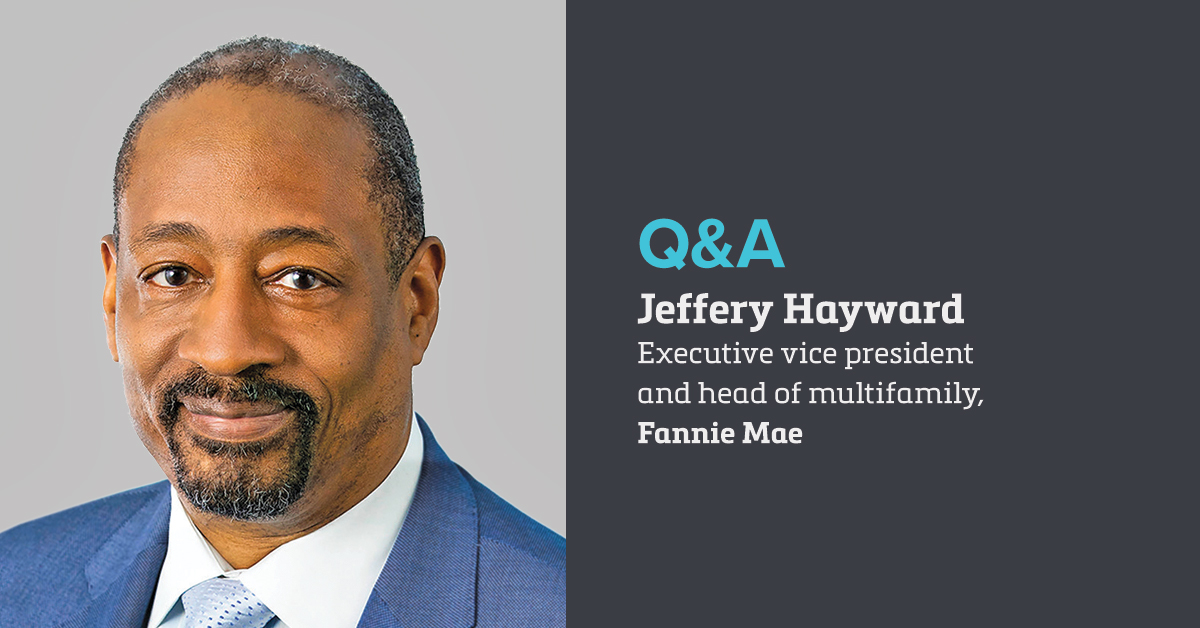The government-sponsored enterprises (GSEs) Fannie Mae and Freddie Mac remain the biggest financiers in multifamily housing. Their regulator, the Federal Housing Finance Agency (FHFA), imposed a cap on the size of the enterprises’ footprints for this year. The new cap allowed the GSEs to increase their purchase volumes slightly but restricted the agencies in other ways.
Last year, FHFA put a $100 billion cap on each GSE’s multifamily financing for the five quarters through fourth-quarter 2020. It included a requirement that at least 37.5% of this volume must be for affordable housing. Has that changed your focus in any way?
The cap is really an expression of liquidity. The stated purpose of the government-sponsored enterprises is to have liquidity in the market at all times and to promote affordability. So, the cap is really an outward expression of those two objectives. So, regardless of the cycle, we can help ensure there is enough liquidity in the market and enough liquidity to promote affordability.
People think that the new 37.5% requirement is a restriction. That’s not how we think about it. We think about that guideline as an opportunity. It is not a ceiling but [a directive] that we should be able to do as much of that business as we can. It’s a way of giving the market certainty. How we run our business hasn’t really changed that much because of it.
Fannie Mae has been a pioneer in financing environmentally friendly “green” apartments, but your regulator is no longer allowing the GSEs to do an unlimited amount of green financing above the cap. Do you expect lending volumes to drop?
We’ve been in the green business before there was even a cap regime. We’re still doing green business. We started to experiment with this and we finally, over time, have really grown the program. We’re in it and we’re in it to stay because we think it’s a great risk-management tool. That means that an owner that’s going to go in and fix up a property, and make it energy efficient, is creating a better-run apartment. So, our participation in this market has nothing to do with whether there is a cap.
How will the demise of LIBOR (the London Interbank Offered Rate) and the eventual use of the Secured Overnight Financing Rate as the interest rate benchmark affect the multifamily mortgage market?
Any time you’re going to change from an index that has been accepted for decades to a new index, there is going to be a transition period. Our job is to work with lenders and others to make that transition as smooth as possible. We don’t do a lot of variable-rate products. Probably more than 90% of what we do is fixed rate. So, for us in particular, it’s not a huge issue.
Our job is to work with lenders and others to make that transition as smooth as possible.
Is technology changing how multifamily loans are originated?
In general, technology will get better in the multifamily origination process. That’s going to happen. It will never be like it is in single-family [financing]. If you think about single-family, it’s basically millions and millions of very similar assets with a very similar approach. When you start dealing with commercial assets, it’s a different product mix and smaller scale. You can’t get to the same kind of scale as single-family because the elements are different.
There’s a bunch of unique considerations that go into the underwriting or origination process in multifamily that are far more complex than those seen in single-family. So, the simple answer is there will be some improvements in how people approach, let’s say, valuations in multifamily. You are also going to see some process efficiency along the way, but I don’t see a conversion to where single-family is. It just doesn’t have the same scale.






